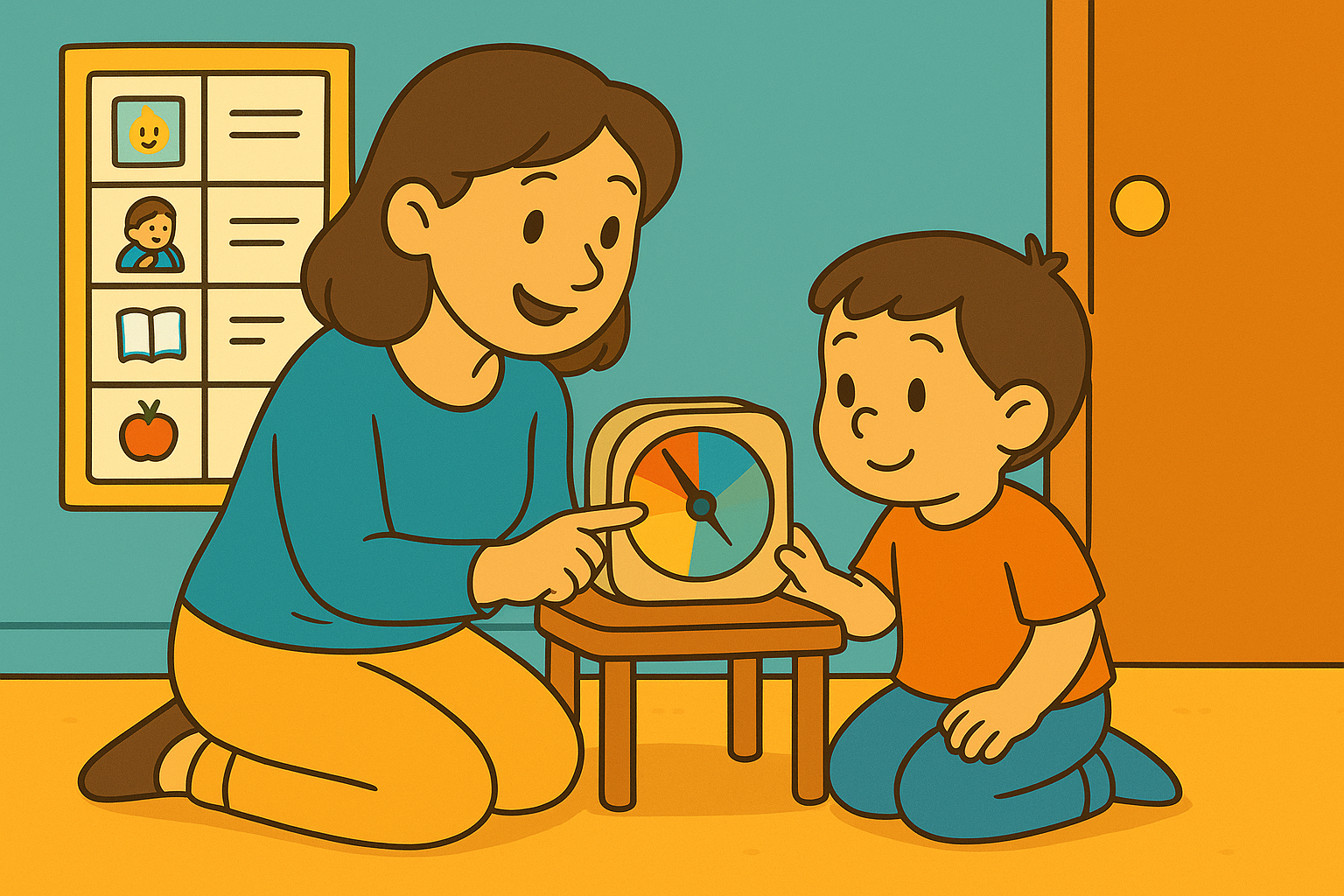Teaching Transitions With Visual Timers
Teaching Transitions With Visual Timers
Why Transitions Are Hard for Young Children
Transitions require an internal shift — stopping one activity, preparing for another, and managing emotions in between. For young children, that shift is often difficult because their brains process experience in the now. When a transition is unexpected or abrupt, it may feel like a loss instead of a change. Visual timers help bridge that space gently. They allow children to see time, not just feel pressured by it — turning transitions into something predictable instead of sudden.
How Visual Timers Support the Brain
Visual timers give children access to something they don't yet understand cognitively: the passing of time. For kids, timers:
Reduce resistance to stopping activities
Provide warning before shifts
Allow emotional preparation
Build cognitive planning skills
Support independence through visual cues
Children master transitions sooner when the brain can see what the body is being asked to do. This aligns with the approach in Using Visual Cues for Routine Consistency, where visuals offer structure without verbal overload.
Types of Visual Timers That Work Best
The tool doesn’t need to be complex — only visible and consistent. Examples:
Sand timers
Digital visual countdown apps
Color-fading timers
Pie-chart style countdown clocks
Visual timers with sound-only endings
DIY paper timers with movable markers
The key is consistency and clear display — children need the timer in sight to process it.
How to Introduce a Timer Without Pressure
Visual timers should feel like support — not consequence. Try introducing them like this:
“This timer helps our brains get ready to change activities.”
“Let’s see how the time disappears together.”
“When the color is gone, we can shift gently.”
“You can watch it if you want — it’s just here to help.”
When timers are framed as helpers (not alarms), children are more willing to trust them.
The “Two-Minute Signal” That Eases Transitions
Transitions often stress children when they feel rushed. Use a two-minute warning with your timer:
“Two minutes until we shift...”
“Let’s finish strong.”
“Do you need anything before we change?”
“What’s the next thing your body will do?”
Even a brief pause lets children emotionally recalibrate before movement begins. This mirrors strategies in Morning to Evening: Building a Flow That Works, where transitions are eased through prep rather than pressure.
Letting Children Press Start Themselves
Giving children control often reduces resistance. They can:
Press the start button
Turn over the sand timer
Move the paper marker
Announce, “The timer begins!”
Small participation shifts transitions from a command to a co-created moment.
Helping Kids Read Their Own Cues
Timers teach something deeper than scheduling — they teach self-awareness:
“Does your body need more time?”
“Would another timer help?”
“Is your brain still busy with this?”
“How does your body feel when the timer ends?”
Children begin connecting time and sensation — crucial for emotional regulation.
Timer Tips for Tricky Transitions
Some transitions need extra support. Try:
A visual “after-timer” card that shows what comes next
Choosing a calm song to follow the timer
Offering choice: “Walk or tiptoe to the next activity?”
Using a second timer for “reset time” if needed
Timers don’t need to signal only endings — they can invite beginnings gently too.
When Timers Don’t Work (Yet)
If a child ignores or resists a timer, it may mean:
The visual isn’t clear enough
The timing is too short or too long
Emotions are too high for logic
The routine lacks emotional anchors
In these cases, return to connection. A slow breath, soft words, or hand on their shoulder often does more than a timer ever could.
Moving From External Timer to Internal Rhythm
Over time, visual timers can be reduced — because the rhythm becomes internal. Children may begin to:
Predict when transitions are coming
Ask for warnings
Naturally wind down before shifts
Manage their own task pacing
This mirrors progression seen in Creating Routines That Adapt as Kids Grow, where tools slowly become internal skills.
The Heart of Transition Support
Visual timers teach children that time isn’t something that “happens to them” — it’s something they can work with. They turn transition from disruption into rhythm, from resistance into readiness. When children learn to expect change,
they learn to move with the day — not against it. And with every gentle countdown, they grow a little stronger in something essential: the ability to begin again.
This content is for educational purposes and is not a substitute for professional medical or psychological advice.
Popular Parenting Articles


